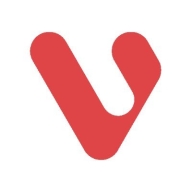

IBM Engineering Lifecycle Management and Visure Requirements ALM Platform are competitors in the Application Lifecycle Management domain, focusing on comprehensive solutions for complex project requirements. IBM ELM often has an edge in integration capabilities, while Visure is preferred for its customization and user-friendly interface.
Features: IBM ELM includes advanced traceability, integration with multiple tools, and a robust reporting system. Visure Requirements ALM Platform offers customizable workflows, flexibility, and a strong focus on specific requirement management processes.
Ease of Deployment and Customer Service: IBM ELM involves a complex setup but benefits from extensive support channels. Visure Requirements ALM Platform has a simpler deployment path and intuitive onboarding, with a focus on personalized customer interaction.
Pricing and ROI: IBM ELM generally requires a higher initial setup cost but provides significant ROI over time due to its extensive functionality and integration, while Visure Requirements ALM Platform offers competitive pricing with agile implementation focused on value delivery.

IBM Engineering Lifecycle Management stands out for its robust Agile Scrum planning, lifecycle traceability, and tool management, offering cloud-based configurability and strong collaboration features.
IBM Engineering Lifecycle Management provides rich capabilities for Agile project management, facilitating requirements and test management, configuration management, and version control. Its integration with IBM Doors supports comprehensive requirements handling, and the cloud-based platform enhances collaborative efficiency across teams. Despite needing advances in user-friendliness and reporting, ELM's global configuration and compliance features make it invaluable in demanding environments.
What are the key features of IBM Engineering Lifecycle Management?IBM Engineering Lifecycle Management is vital in sectors like automotive and manufacturing, where it implements Agile frameworks to manage requirements, conduct testing, and handle defects. It integrates into development pipelines ensuring live traceability and visibility, supporting critical engineering processes efficiently.
With Visure Requirements ALM Platform you can create, edit and manage requirements easily within the tool. This enables your team to simplify the Requirements Capture process by gathering complete and precise requirements to deliver products that meet the customer needs and align business with engineering.
We monitor all Application Lifecycle Management (ALM) Suites reviews to prevent fraudulent reviews and keep review quality high. We do not post reviews by company employees or direct competitors. We validate each review for authenticity via cross-reference with LinkedIn, and personal follow-up with the reviewer when necessary.